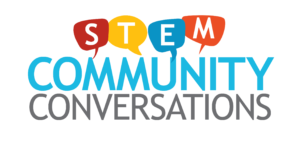Webinars
Featured webinar
State of SLECoPWebinars
State of SLECoP
Join a conversation with Jan Morrison, CEO and founder of TIES, as she introduces new leadership of the SLECoP, welcomes new Ecosystems and reports about where the initiative will be heading for the u …
Read MoreY is STEM So White
Watch as Ecosystems leaders hold a frank conversation on Racial Equity and STEM. Nichole Pinkard, from Northwestern University, and Reginald McGregor, of Rolls Royce joined the SLECOP to push us to th …
Read MoreElevate Tech Education with AWS GetIT and TIES
Are you an educator looking to empower the next generation with essential digital skills? Introducing Amazon Web Services (AWS) GetIT, a transformative education program and competition designed for s …
Read MoreSTEM Ecosystems Critical for Nation’s Economy and Workforce Needs Oct. 28 Webinar to Explore Ecosystems and the $52 Billion CHIPS Act
WASHINGTON, D.C. – After months of collaboration involving dozens of partners, TIES is releasing a briefing book exploring the work of the nation’s STEM Ecosystems in an effort to elevate their consid …
Read MoreSTEM Learning Ecosystems CHIPS Act Briefing Book
Join us and learn more about the briefing book as well as next steps in the effort to lift up the work of STEM Ecosystems in their various forms, which includes HUBS, various STEM alliances, the STEM …
Read MoreEquity in STEM
http://https://www.youtube.com/watch?v=jTmPXngKkcY The session was moderated by Natasha Smith Walker, Executive Director, Chicago STEM Pathways Cooperative Ecosystem and featured Me’lani Labat Joseph, …
Read MoreSTEM NEXT Fellows: Connection to Public Workforce Systems
Join Stephanie Rodriguez, STEM Next’s Workforce and Policy Fellow, for a roundtable discussion about the connection between STEM Learning Ecosystems and the Public Workforce System. Stephanie is eager …
Read MoreSOLIDWORKS Apps for Kids
Learn about SOLIDWORKS® Apps for Kids, a powerful tool for children from ages 4 to 14 to begin exploring the excitement of imagining and designing creations. SOLIDWORKS Apps for Kids inspires young th …
Read MoreSTEM NEXT Fellows: Addressing Emerging Technology and 21st Century Needs
Quincy Brown, STEM Next Office of Science and Technology Policy Fellow, and Zarek Drozda, Data Science Fellow at US Department of Education’s Institute of Education Sciences, held a roundtable discuss …
Read MoreShare your Stories Ecosystems Expertise
Listen to the discussion amongst Ecosystems regarding social media, press releases, the power of relationships, and more!
Read MoreStrengthening STEM Ecosystems Act
If passed, the Strengthening STEM Ecosystems Act, introduced by Sens. Mark Kelly (D-AZ) and Jerry Moran (R-KS), would establish a grant program within the National Science Foundation to provide $25 mi …
Read MoreEcospheres Training
Ecospheres are “Groups of STEM Ecosystems that are connected by geography, by audience, or by other unifying factors.” Like individual Ecosystems, Ecospheres support networking and collaboration, help …
Read MoreBuilding & Maintaining Partnerships with Business & Industry Part 2
This is Part II of our conversation with Ecosystem leaders about building and sustaining partnerships with Business & Industry. Business and industry is a huge stakeholder within a community and c …
Read MoreNSF Award-winning – Purpose and Meaning Career Fit Assessment – Helps Students Find Their Way
Finding our purpose and turning it into a meaningful career path is difficult for all of us. In order to support students in making these decisions, Tallo has released its newest tool – PAM – in a sui …
Read MoreCommunity Colleges: Accelerating STEM Learning by Catalyzing Community Resources.
Across the country, community colleges are powerful, if underutilized, resources. Community colleges offer secondary education and career pathways without the financial burdens of four-year colleges. …
Read MoreEcosystem State Forum – STEM Ed Coalition & STEM Learning Ecosystems Community of Practice
This was the first in a series of virtual “State Forums” where state STEM Ecosystem partners joined the members of the STEM Education Coalition in a discussion of state policy issues. This conversatio …
Read MoreBuilding and Sustaining Relationships with Business & Industry
Download the PDF How is your Ecosystem building and sustaining relationships with business and industry? Are your relationships thriving?Are you struggling? Strong partnerships are the key to building …
Read MoreRecruiting / engaging more business partnerships
STEM Ecosystems Conversation: Recruiting / engaging more business partnerships
Read More
- Previous
- Next

STEM Virtual Home Lab – workshops with practical tips, virtual experiments and concrete tools that families and teachers – even those with little time, few resources and no STEM or teaching experience – can use to engage children’s learning.
